
The Czech Republic, also known as Czechia, is a landlocked country in Central Europe. Historically known as Bohemia, it is bordered by Austria to the south, Germany to the west, Poland to the northeast, and Slovakia to the southeast. The Czech Republic has a hilly landscape that covers an area of 78,871 square kilometers (30,452 sq mi) with a mostly temperate continental and oceanic climate. The capital and largest city is Prague; other major cities and urban areas include Brno, Ostrava, Plzeň and Liberec.

Cubism is an early-20th-century avant-garde art movement that revolutionized European painting and sculpture, and inspired related artistic movements in music, literature, and architecture. In Cubist works of art, the subjects are analysed, broken up, and reassembled in an abstract form—instead of depicting objects from a single perspective, the artist depicts the subject from multiple perspectives to represent the subject in a greater context. Cubism has been considered the most influential art movement of the 20th century. The term cubism is broadly associated with a variety of artworks produced in Paris or near Paris (Puteaux) during the 1910s and throughout the 1920s.

František Kupka, also known as Frank Kupka or François Kupka, was a Czech painter and graphic artist. He was a pioneer and co-founder of the early phases of the abstract art movement and Orphic Cubism (Orphism). Kupka's abstract works arose from a base of realism, but later evolved into pure abstract art.

The National Museum (NM) is a Czech museum institution intended to systematically establish, prepare, and publicly exhibit natural scientific and historical collections. It was founded in 1818 by Kašpar Maria Šternberg. Historian František Palacký was also strongly involved in the foundation of the museum.

The National Gallery Prague, formerly the National Gallery in Prague, is a state-owned art gallery in Prague, which manages the largest collection of art in the Czech Republic and presents masterpieces of Czech and international fine art in permanent and temporary exhibitions. The collections of the gallery are not housed in a single building, but are presented in a number of historic structures within the city of Prague, as well as other places. The largest of the gallery sites is the Trade Fair Palace, which houses the National Gallery's collection of modern art. Other important exhibition spaces are located in the Convent of St Agnes of Bohemia, the Kinský Palace, the Salm Palace, the Schwarzenberg Palace, the Sternberg Palace, and the Wallenstein Riding School. Founded in 1796, it is one of the world's oldest public art galleries and one of the largest museums in Central Europe.

Koloman Sokol was one of the most prominent Slovak painters, graphic artists and illustrators. He was a founder of modern Slovak graphic art.
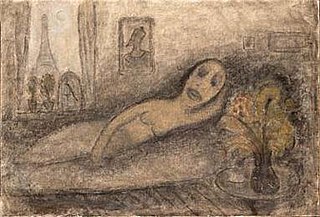
Alén Diviš was a Czech painter known for his melancholic art. Having spent much of his life abroad, often working in solitude, he remained rather unknown during his life but has had a postmortem revival in the art world.

The Czech National Revival was a cultural movement which took place in the Czech lands during the 18th and 19th centuries. The purpose of this movement was to revive the Czech language, culture and national identity. The most prominent figures of the revival movement were Josef Dobrovský and Josef Jungmann.

Czech culture has been shaped by the nation's geographical position in the middle of Europe, the Slavic ethnicity of Czechs, influences from its neighbors, political and social changes, wars and times of peace.
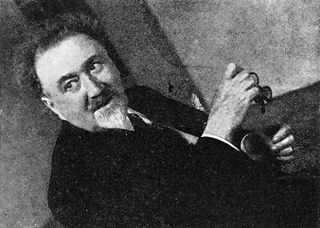
Max Švabinský was a Czech painter, draughtsman, graphic artist, and professor in Academy of Graphic Arts in Prague. Švabinský is considered one of the more notable artists in the history of Czech painting and produced significant work during the first half of the 20th century. He was relatively unusual among modernist artists in that his work was accepted by the communist regime; this was due at least in part to his having formed his artistic personality prior to 1900, prior to the advent of cubism. His work was part of the painting event in the art competition at the 1932 Summer Olympics.

Czech Cubism was an avant-garde art movement of Czech proponents of Cubism, active mostly in Prague from 1912 to 1914. Prague was perhaps the most important center for Cubism outside Paris before the start of World War I.
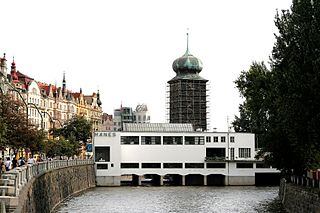
The Mánes Association of Fine Artists was an artists' association and exhibition society founded in 1887 in Prague and named after painter Josef Mánes.
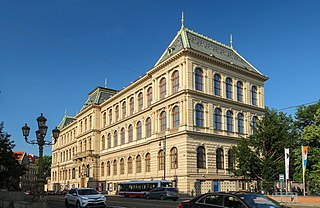
Founded in 1885, the Prague Museum of Decorative Arts is housed in a Neo-Renaissance edifice built from 1897 to 1899 after the designs of architect Josef Schulz. It opened in 1900 with exhibitions on the first floor. The Museum's rich collections include decorative and applied arts and design work ranging from Late Antiquity to the present day with focus on European objects, particularly arts and crafts created in the Bohemian lands. The impressive interior of the permanent exhibition, “Stories of Materials,” offers visitors an excursion into the history and development of decorative arts in the disciplines of glass, ceramics, graphic art, design, metal, wood and other materials, as well as objects such as jewellery, clocks and watches, textiles, fashion, toys and furniture.

The Lobkowicz Palace is a part of the Prague Castle complex in Prague, Czech Republic. It is the only privately owned building in the Prague Castle complex and houses the Lobkowicz Collections and Museum.

The Academy of Arts, Architecture and Design in Prague is a public university located in Prague, Czech Republic. The university offers the study disciplines of painting, illustration and graphics, fashion design, product design, graphic design, ceramics and porcelain, photography and architecture.
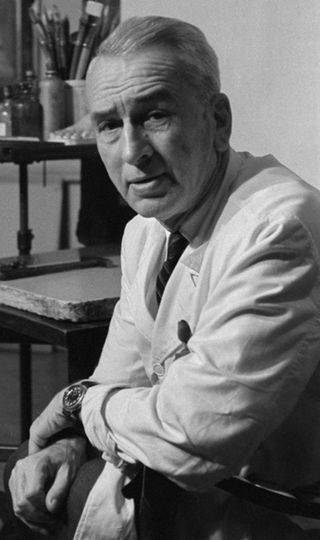
František Muzika was a Czech artist. He was a prominent representative of avant-garde in Czechoslovakia in the first half of the 20th century.

Czech Baroque architecture refers to the architectural period of the 17th and 18th century in Bohemia, Moravia and Czech Silesia, which comprised the Crown of Bohemia and today constitute the Czech Republic.

Czech Gothic architecture refers to the architectural period primarily of the Late Middle Ages in the area of the present-day Czech Republic.

Czech architecture, or more precisely architecture of the Czech Republic or architecture of Czechia, is a term covering many important historical and contemporary architectural movements in Bohemia, Moravia, and Silesia. From its early beginnings to the present day, almost all historical styles are represented, including many monuments from various historical periods. Some of them are UNESCO World Heritage Sites.

Aleš Lamr is a Czech artist. He presents himself as a painter, printmaker, author of murals and ceramic reliefs, sculptor, ceramist.

























